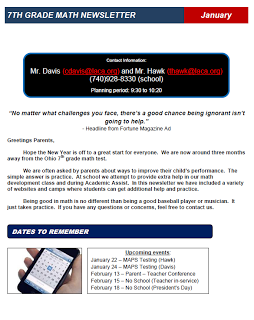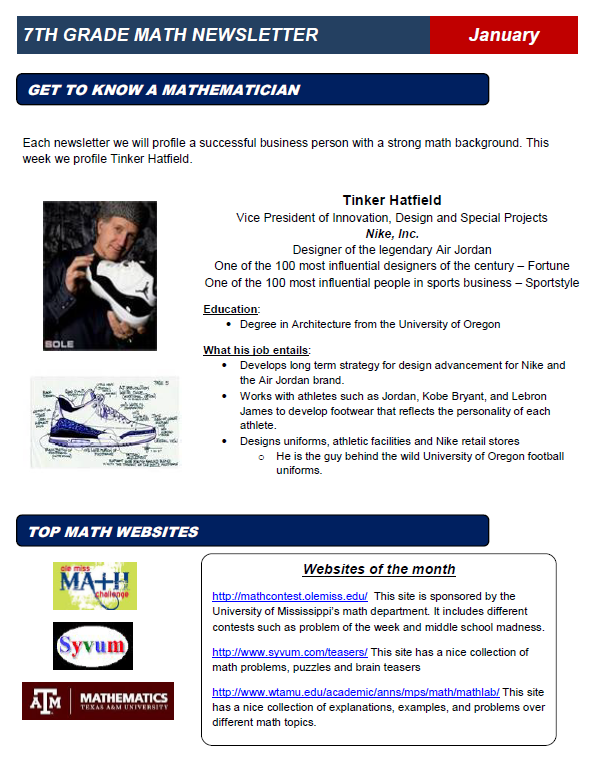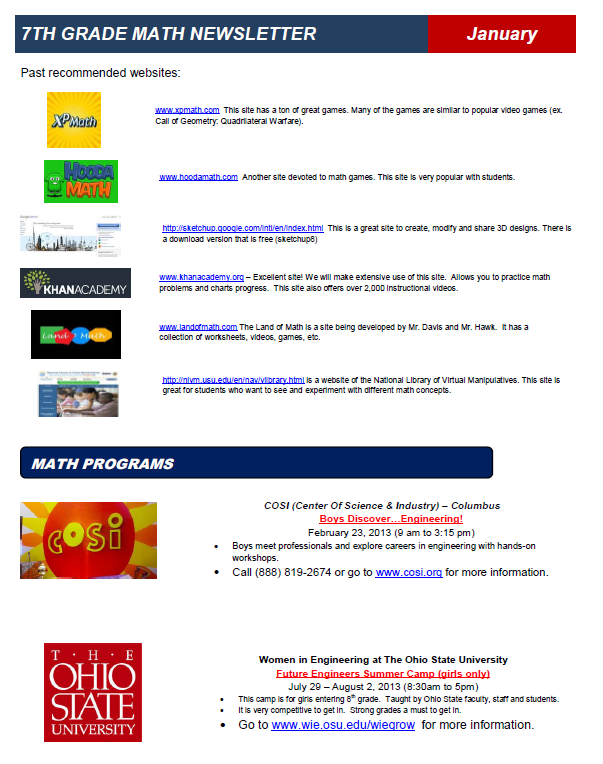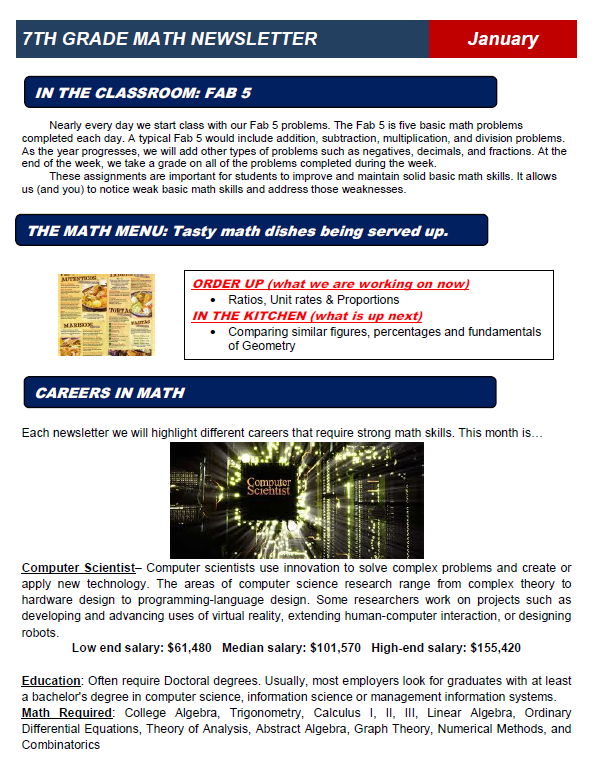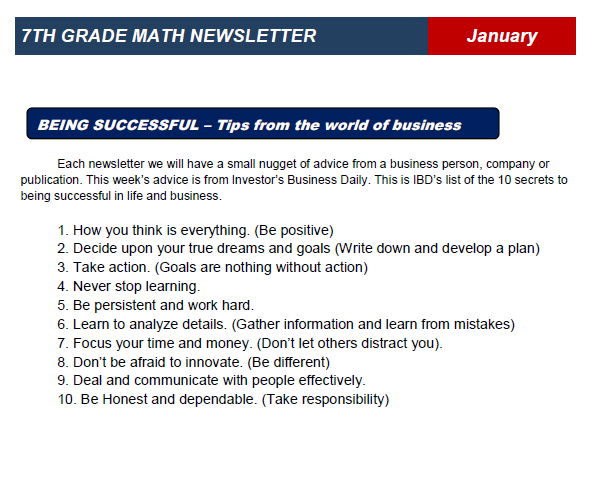One of the things we try to do each year is to create a math newsletter to share with parents, students and administration. The main reason is to help develop better communication with parents. The development of our newsletter is an ever evolving process, but we feel like we have hit on some key things that make our newsletter very effective.
At the start of the year we focus on gathering the email addresses of different parents, students and any one else that might want the newsletter. We have been able to get around 90% of our student's families to sign up. When we send out the newsletter we just email a PDF to the different people on our email list. We mail copies to families that did not sign up for email. We also make extra copies and leave in the classroom for students that might not see the email version. In the past we sent out newsletters each month. This year we are attempting to send out one a quarter.
Above is a sample of one of our newsletters. The rest of this article will focus on the content, features and structure of the newsletter.
#1 Headline: The first thing we do on our newsletter is state what it is and for what time period. In this case we call the newsletter the "7th grade math newsletter" (yes we know, verrrrry creative). If we had newsletters for each individual teacher we might have use something like Mr. Mitchell's Math Class (also very boring) or perhaps something slightly more interesting such as Math Mania.
#2 Contact Information: This part of our newsletter includes information such as Names, email address, school phone, planning period times, website, etc.
#3 Quote: We like to have a quote about dealing with one of two topics: 1) Importance of math and/or 2) Motivational.
#4 Greeting: We address this to the parents despite the fact that many of the readers of the newsletter are our students.
#5 Dates to Know: Just like it sounds. We focus on big events such as early releases, no school, end of grading period, parent - teacher conferences, etc.
#6 Classroom Activity: In this section of the newsletter we highlight an activity that takes place in the classroom. For example, this newsletter mentions our "Fab 5" which is a basic skills review at the start of each class. In this section we might mention a math program we are using, special projects, or discuss our invention program.
#7 Upcoming Topics: In this section we list what we are currently working on in class and what parents can expect in the next few weeks.
#8 Math Careers: One of our goals is to let parents and students know about the many career options available in mathematics. It seems obvious to us, but many students have no idea about the math needed in different careers. A couple of weeks ago a student told me how he wanted to be an architect but was stunned to find out math was required math.
#9 Get to Know a Mathematician: Here we are Highlighting a person that has a career that uses math. We like to focus on interesting jobs/people that are unique. In this newsletter we focused on Tinker Hatfield the person that worked on designing Air Jordan shoes. We make a conscious effort to have an equal amount of men and women.
#10 Websites of the Month/Quarter: We feature two or three sites that we feel could be helpful and sometimes interesting. In theory parents and students can use these sites for extra practice or assistance.
#11 Past Websites of the Month/Quarter: Instead of deleting our past website selections we keep them as a running list. As the school year progresses this turns into a nice collection of resources for the student, parent and even teacher.
#12 Math Programs: Our school is located just 30 minutes outside of Columbus, Ohio and just 45 minutes from The Ohio State University. This location allows us to have access to a variety of math programs.
In each newsletter we try to promote local Science, Tech, Engineering, and Math (STEM) programs. This is information that most parents are not aware of. By listing these programs many of our families are able to find items that interest their kids.
#13 Tips on Being successful: Finally we include some words of wisdom from top business leaders. The theme of this section usually focuses on work ethic, goals, and perseverance.
Todd Hawk is a middle school math teacher and the Founder of the Land of Math LLC (www.landofmath.com). You can reach him at landofmath2@gmail.com or follow him on twitter: @landofmath2.




